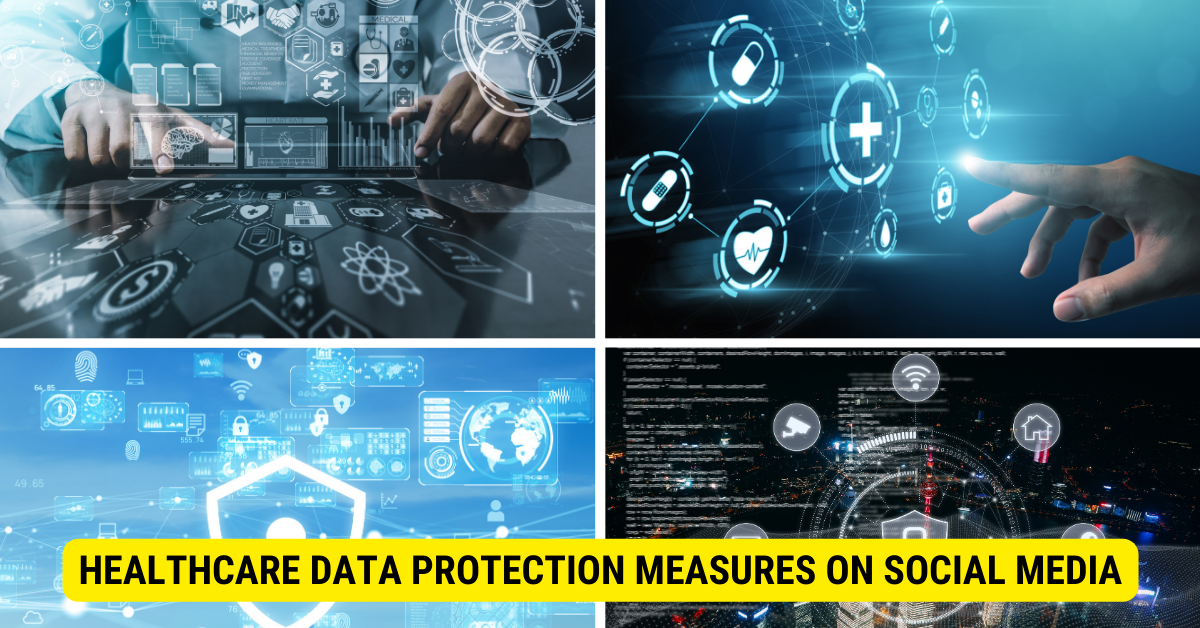Healthcare data on social media platforms is secured through technology, platform regulations, and user awareness. Techniques include privacy settings, two-factor authentication, data encryption, and regular audits. User awareness and vigilance remain indispensable for protecting healthcare data. Future technologies like AI and Blockchain could further enhance security levels.
Understanding Healthcare Data
The Value of Healthcare Data

Healthcare data, which includes personal health information, treatment records, and medical research data, holds immense value. It’s vital for patients, healthcare providers, and researchers alike.
Healthcare Data on Social Media: Risks and Challenges
The risks of sharing healthcare data on social media platforms are significant. Unprotected data can lead to privacy violations, identity theft, and potential misuse by third parties. But don’t despair! Security measures are in place to combat these challenges.
Healthcare Data Protection Measures on Social Media

Healthcare data is a highly sensitive subject, as it involves people’s personal health records, demographics, medical history, and more. Thus, its security is paramount, particularly when it’s shared or discussed on social media platforms. Here are some ways how healthcare data is secured on social media platforms:
- Data Encryption: Encryption is a fundamental part of securing any data, and this is no different for healthcare data on social media platforms. The data is encrypted both during transmission (in-transit) and when stored (at-rest).
- Access Control: Not everyone should have access to all data. To manage this, social media platforms have access control measures in place to ensure only authorized personnel can access certain data. User access levels are defined, and permission to access healthcare data is granted only to those who need it.
- Two-Factor Authentication (2FA): 2FA is a common security measure that adds an extra layer of security to the standard password method of online identification. A user will need to provide two different identification methods before gaining access to their account, minimizing the chance of unauthorized access.
- Data Anonymization: If healthcare data is shared for research or other purposes, it is anonymized. This means all personally identifiable information is removed or altered to prevent the identification of the individual to whom it pertains.
- Data Minimization: This principle ensures that only the necessary data is collected, processed, and stored. In social media contexts, this could mean that healthcare discussions or groups collect only the necessary data to serve their purpose.
- User Awareness & Training: The platforms often provide privacy guidelines and suggestions to users about how to protect their data, like not sharing sensitive information in public posts or even in private messages.
- Security Audits: Regular security audits are conducted to identify potential vulnerabilities and address them promptly.
- Regular Software Updates: Regular updates ensure that the social media platform is protected against the latest known threats and vulnerabilities.
- Secure Application Programming Interfaces (APIs): APIs that are used for data transfer are also secured to prevent any data leaks.
- Compliance with Health Regulations: Social media platforms must comply with regulations such as the Health Insurance Portability and Accountability Act (HIPAA) in the U.S., General Data Protection Regulation (GDPR) in the EU, and other local data protection laws depending on the region. These regulations set stringent rules on how healthcare data should be handled, ensuring the highest level of security and privacy.
Remember, while these measures can greatly enhance the security of healthcare data, it is also the responsibility of users to manage their data carefully on social media. This can include actions such as checking privacy settings, being aware of phishing scams, and not sharing sensitive information in inappropriate or unsecured places.
FAQs
Why is healthcare data on social media at risk?
Healthcare data on social media is at risk due to potential privacy violations, identity theft, and misuse by unauthorized parties.
What is the importance of two-factor authentication in securing healthcare data?

2FA provides an extra layer of security, reducing the chances of unauthorized Access, even if the password is compromised.
How do social media platforms secure healthcare data?
Social media platforms use privacy settings, data encryption, regular audits, and two-factor authentication to secure healthcare data.
What is the role of AI in securing healthcare data on social media?
AI can identify suspicious activity and potential threats, thus contributing to a more secure environment.
What can I do to protect my healthcare data on social media?
You can take steps like using strong, unique passwords, enabling two-factor authentication, managing your privacy settings, and being vigilant about the information you share.
Key Takeaways
- Healthcare Data Value: Healthcare data, comprising personal health information, treatment records, and medical research data, is extremely valuable, making its protection essential.
- Privacy Settings: Privacy settings on social media platforms provide an initial line of defense by controlling the visibility of content and limiting Access to personal information.
- Two-Factor Authentication: 2FA, requiring users to verify their identity in two ways, enhances security and reduces chances of unauthorized Access.
- Data Encryption and Audits: Social media platforms employ data encryption to secure data and conduct regular audits to identify potential vulnerabilities.
- User Awareness: User awareness and responsible behavior are crucial elements in the overall security of healthcare data on social media.
- Future Security Technologies: Future security measures may include the use of Artificial Intelligence (AI) and Blockchain technology, which hold promise for better security
Conclusion
Securing healthcare data on social media platforms involves combining technology, platform regulations, and user awareness. Privacy settings, two-factor authentication, secure communication channels, data encryption, and regular audits play their part. Looking ahead, advancements in AI and blockchain technology are promising. However, nothing replaces user awareness and vigilance in protecting their data.
